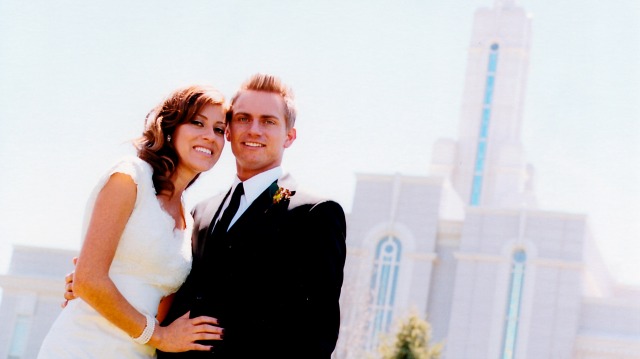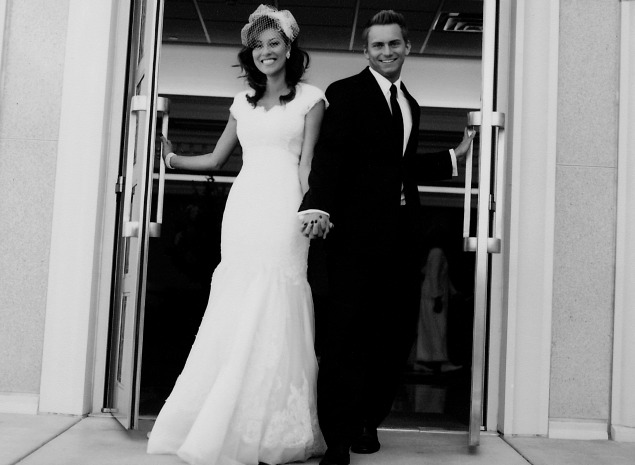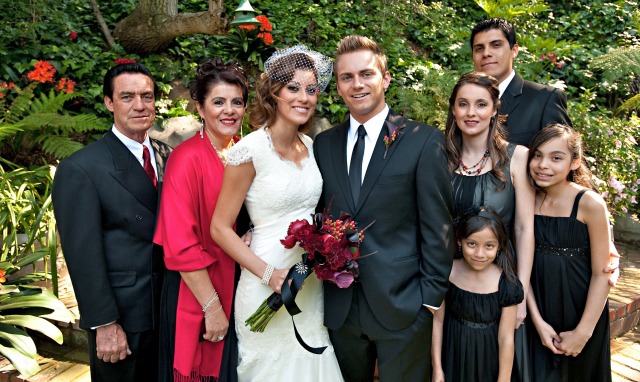I’m not a fan of big weddings. I guess it’s my low social need, or that I feel more comfortable in small intimate settings. I know how to socialize and enjoy conversation, but I don’t usually look forward to big productions. I go to weddings or receptions as a matter of duty. So I didn’t really understand the sentiment expressed in a recent Slate article condemning Mormons for excluding people from a marriage ceremony. (Sorry Your Friends Can’t Come to Your Mormon Wedding). But I can empathize with those who want all their family at their wedding. And there might be a good solution to Mormon wedding rules and regulations.
I found it interesting that in some countries (such as England) the government does not recognize a temple marriage as legal, and so couples must be married civilly first and then go to the temple to be sealed (Mormon lingo for married for eternity.) I guess that works for LDS couples who want a big wedding with family and friends who would not be able to attend a temple ceremony (since only Mormons in good standing can enter the temple.) I didn’t know that church policy prevents couples in the U.S. from doing the same.
Another part of the article says that the church is “punishing couples who have separate civil ceremonies by making them wait a year for a temple marriage.” I don’t know much about that. I know you have to wait a year after you are baptized to go to the temple, but I have never heard of the “rule” that if you marry civilly you must wait one year to go to the temple. If you have a temple recommend, I don’t really get that. Is that true?
The article quotes from the 1960 church handbook “Where couples deliberately refuse temple marriage for reasons of their own, and afterward desire a sealing, they should be asked to wait for at least a year in which to demonstrate their sincerity and worthiness to receive this blessing.” Hmmm, that does not make sense, considering that the rule is different in countries like Britain. Is that still in the current handbook? According to this faithful website, familyfirstweddings, I presume it is.
I got married civilly back in 1977. My husband joined the LDS church about two weeks before our marriage. We had family at our ceremony, and we were married in my parents house in Whiting Woods. We had a large reception, where I wasn’t that comfortable. Two years and eight months later we were sealed in the Los Angeles Temple. We only had a few family members there. But I remember some other people came into our sealing room, people we did not know, but were in our new “ward”. For me, I wish they had not been there. I didn’t know them and I have no relationship with them to this day. For me, I was annoyed that they came in. I didn’t invite them, and I’m not sure who did. But I’m over it. wink, wink, nod, nod.
I realize that some people feel left out when they can’t attend the sacred union. My daughter-in-law is a convert, and she and my son waited a year after her baptism so they could be married in the temple. I remember her surprise when I tried to explain that the temple sealing was the “actual marriage” and so she didn’t need to plan a big wedding ceremony — but she could plan the big reception. At first she didn’t understand — she was unfamiliar with Mormon weddings in the U.S. All her family and friends were not LDS and they wanted to come to her marriage.
She finally understood that she and my son could have a ring ceremony after the temple marriage, and that could be the place and time when all her family and friends could watch. This is quite common in Mormon temple marriages. It’s the reverse of Britain, but the couple do not “get married” in a ring ceremony — though it looks and feels just like a marriage ceremony. My daughter-in-law’s parents and family came to the temple in Utah, waited outside, and then we had a luncheon/reception afterwards. Two days later they had a ring ceremony and large reception in California. Everyone seemed satisfied.
Traditions are funny things — accepted easily by those who have them, and somewhat alien to those outside. But it helps to be tolerant and accepting, and accommodating as much as possible.
I have known LDS couples to have a reception first and then get married in the temple. They often have two receptions — and call the second one an open house — if the groom is from one state of the country and the bride from another. This accommodates friends who could not travel long distances.
I don’t know of anyone who is deeply offended by not being able to watch the bride and groom make sacred vows in the temple. And from my perspective, the temple ceremony is a private matter — it’s a sacred ordinance between the husband, the wife, and God. It is short and scripted. I’m pretty sure you can find it on the Internet. I’m more inclined to want very few people there watching me make a covenant. While it is necessary to have two witnesses to the marriage sealing, it is really a private moment when you make that marriage covenant. It seems to me that covenant-making should be less of a stage production and more of a sacred agreement between the parties involved.
Perhaps it’s a good idea to let couples marry civilly first and then be sealed in the temple — that way you get the best of both worlds — the civil union and the sacred union — it works in Britain.




